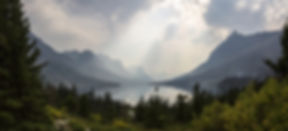

Call Us Now!
406-261-8865
Oxeye Daisy




Oxeye Daisy
(Leucanthemum vulgare)
Common Names:
Oxeye Daisy, Ox-Eye Daisy, Margarite, White Daisy
Description:
Oxeye Daisy is a perennial somewhat resembling the popular Shasta Daisy. Stems are slender and may emerge from the root crowne or the extensive root system it produces. Lower leaves are spoon-shaped and broadly toothed. The leaves are alternate and can grow up to five inches long and two inches wide and they clasp the stem of the plant. Upper leaves grow smaller towards the top of the plant. A mature plant may grow up to two feet in height with a single flower head on each simple one-branched stem. Flower heads are made up of 15 – 30 white rays that circle a yellow button, depressed center. Flowers bloom from June to August. The fruit of this plant is a small flat seed, dark gray in color with no pappus. One plant can produce over 500 seeds and seeds can remain viable in the seedbank for up to three years. The roots of oxeye daisy are extensive and shallow. Reproduction occurs by root and seed.
Key Features:
Sometimes the plants are hard to tell apart even from their leaves, but generally Shasta daisies have larger flowers (up to two inches in diameter) and foliage; and they tend to be bushier plants.
Habitat:
Oxeye daisy is highly adaptable to a variety of sites. It can grow in course to medium textured soils and can be found in moist to moderately dry sites, however, it does prefer abundant sunlight. Once planted as an ornamental, oxeye daisy escaped cultivation and is now common in native meadows, pastures, fields in open and thick woodlands, along waterways and roadsides. It is also found in disturbed areas, hay fields, gardens and lawns, and irrigation ditches.
Currently found in the following counties:
Beaverhead, Broadwater, Carbon, Cascade, Chouteau, Deer Lodge, Flathead, Gallatin, Granite, Hill, Judith Basin, Lake, Lincoln, Madison, Meagher, Mineral, Missoula, Park, Powell, Ravalli, Roosevelt, Sanders, Sheridan, Silver Bow, Teton, Valley
IWM
-
Herbicide
-
Hand Pulling
-
Cultivation
Interesting Facts:
Unfortunately, some of Montana’s state listed noxious weeds are still offered for sale in wildflower seed mixes and oxeye daisy is one of those. Be on the lookout when purchasing seeds for your garden or landscaping. The garden variety Shasta daisy was actually developed as a hybrid from a mix of wild daisies including oxeye daisy by a California scientist.
Photo Credits: Becky Kington; Mary Ellen (Mel) Harte, Bugwood.org; Steve Dewey, Utah State University, Bugwood.org